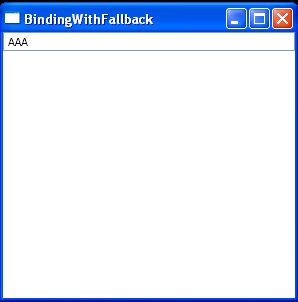Assign your own class to DataContent and bind to TextBox : TextBox « Windows Presentation Foundation « C# / CSharp Tutorial
- C# / CSharp Tutorial
- Windows Presentation Foundation
- TextBox
<Window x:Class="WpfApplication1.Window1"
xmlns="http://schemas.microsoft.com/winfx/2006/xaml/presentation"
xmlns:x="http://schemas.microsoft.com/winfx/2006/xaml"
Title="BindingWithFallback" Height="300" Width="300">
<StackPanel>
<TextBox Text="{Binding Path=FastProperty, Mode=OneWay}" IsReadOnly="True" />
</StackPanel>
</Window>
//File:Window.xaml.cs
using System;
using System.Collections.Generic;
using System.Text;
using System.Windows;
using System.Windows.Controls;
using System.Windows.Data;
using System.Windows.Documents;
using System.Windows.Input;
using System.Windows.Media;
using System.Windows.Media.Imaging;
using System.Windows.Shapes;
namespace WpfApplication1{
class MyClass {
public string FastProperty { get { return "AAA"; } }
}
public partial class Window1 : System.Windows.Window {
public Window1() {
InitializeComponent();
DataContext = new MyClass();
}
}
}
